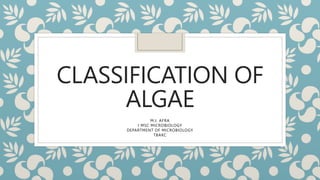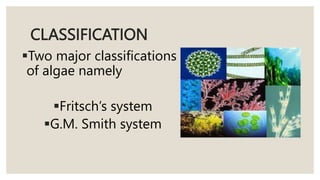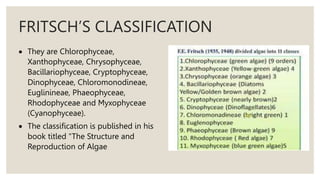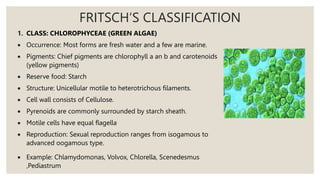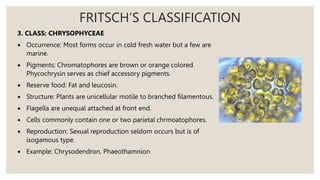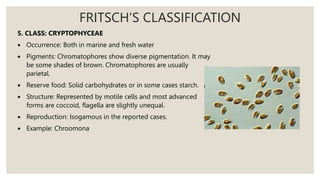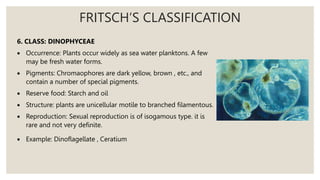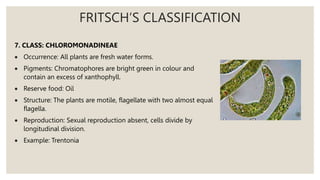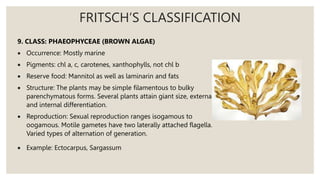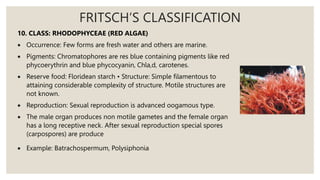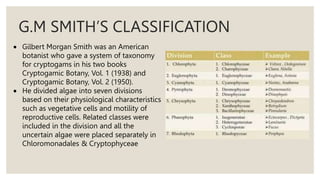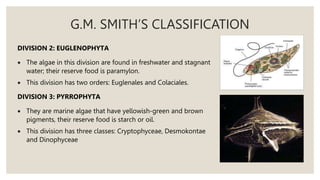The document provides an extensive classification of algae, outlining their characteristics, structure, and reproduction, divided into two major classification systems: Fritsch’s and G.M. Smith's. Fritsch’s classification details various classes such as Chlorophyceae (green algae), Phaeophyceae (brown algae), and Rhodophyceae (red algae), highlighting their occurrences, pigments, and types of reproduction. G.M. Smith's classification focuses on physiological characteristics, categorizing algae into divisions such as Chlorophyta, Euglenophyta, and Cyanophyta, each with its specific features.
